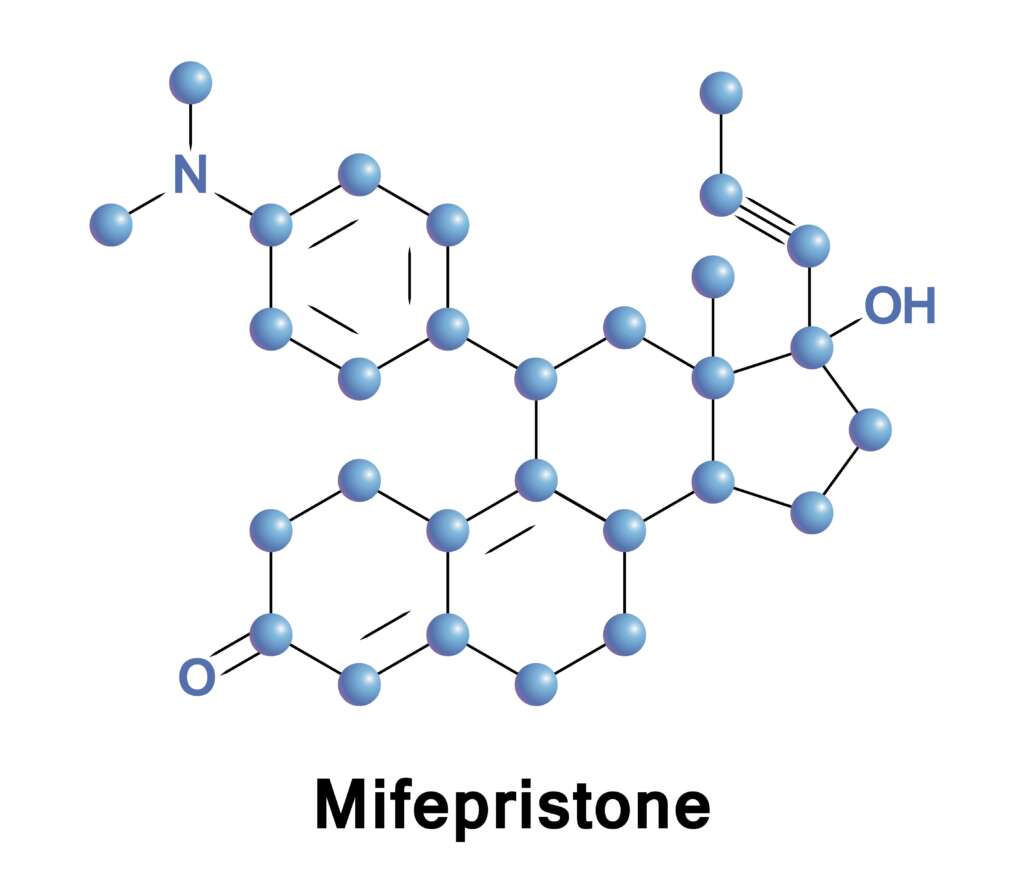Overview of Mifepristone
Mifepristone, marketed under the brand name Mifeprex, is a medication primarily used to terminate early pregnancies. It works by inhibiting the hormone progesterone, which is essential for sustaining pregnancy. This action causes the uterine lining to break down, effectively ending the pregnancy. Mifepristone is commonly used in combination with another medication, misoprostol, to ensure a complete medical abortion.

Historical Background
Development and Early Use
- 1980s: Mifepristone was developed by the French pharmaceutical company Roussel-Uclaf, with Georges Teutsch leading its creation. Initially known as RU-486, it was designed to offer a non-surgical option for early pregnancy termination.
- 1988: France approved the use of mifepristone for medical abortions, making it the first country to adopt this medication.
Expansion and Controversy
- 1990s: Despite facing significant opposition, particularly from anti-abortion advocates, mifepristone was gradually approved in several European countries. Its introduction was marked by intense political and social debates.
- 2000: The U.S. Food and Drug Administration (FDA) approved mifepristone for use in the United States under the name Mifeprex, following rigorous clinical trials and safety evaluations.
Global Acceptance
Mifepristone has been adopted worldwide and is included in the World Health Organization’s (WHO) Model List of Essential Medicines, underscoring its importance in global healthcare.
How Mifepristone Works
Mifepristone functions by binding to progesterone receptors in the uterus, blocking the hormone necessary for pregnancy maintenance. This action leads to the shedding of the uterine lining, similar to the process of menstruation, and detaches the pregnancy from the uterine wall.
Application in Medical Abortion
- Procedure: Mifepristone is taken orally, followed by misoprostol 24-48 hours later. Misoprostol induces contractions to expel the pregnancy.
- Effectiveness: The combination of mifepristone and misoprostol is about 95-98% effective for terminating pregnancies up to 10 weeks gestation.
- Side Effects: Patients may experience cramping, bleeding, nausea, and vomiting. Serious complications are rare but can include heavy bleeding and infection.
Legal and Social Challenges
Mifepristone has been at the center of legal and social controversies, especially in areas with strong anti-abortion movements. Despite legal restrictions and political opposition, mifepristone remains a vital component of reproductive healthcare, offering a non-invasive alternative to surgical abortion.
Recent Developments
- 2016: The FDA updated its guidelines, extending the use of mifepristone up to 70 days of pregnancy and reducing the number of required healthcare visits.
- 2020: The COVID-19 pandemic led to temporary policy changes in some regions, allowing telehealth consultations and mail delivery of abortion medications.
- Research: Ongoing studies are exploring the potential of mifepristone in treating other conditions, such as Cushing’s syndrome and certain types of cancer.
Conclusion
Since its inception in the 1980s, mifepristone has revolutionized reproductive health by providing a safe and effective method for early pregnancy termination. Its use has empowered individuals with a critical option for managing their reproductive health. Despite ongoing debates and legal challenges, mifepristone is widely acknowledged as a crucial medication in the medical community
